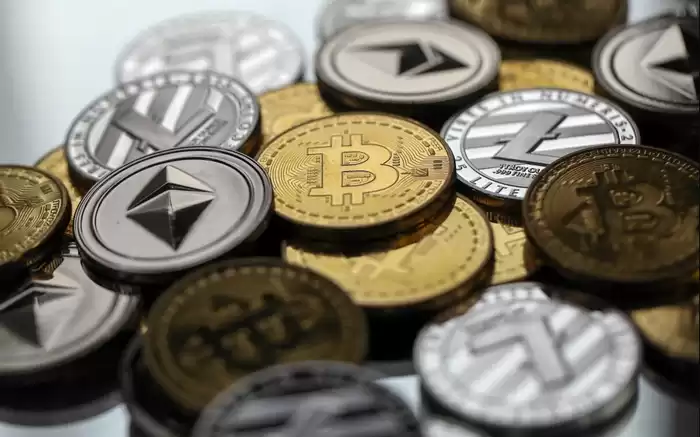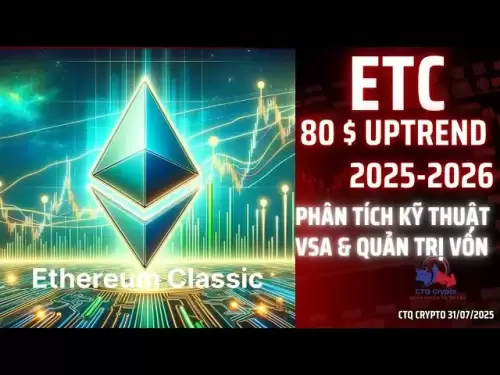-
 Bitcoin
Bitcoin $118400
0.47% -
 Ethereum
Ethereum $3836
2.20% -
 XRP
XRP $3.157
2.98% -
 Tether USDt
Tether USDt $0.9999
-0.03% -
 BNB
BNB $801.5
1.31% -
 Solana
Solana $180.9
2.07% -
 USDC
USDC $0.9999
-0.02% -
 Dogecoin
Dogecoin $0.2225
2.50% -
 TRON
TRON $0.3285
-1.02% -
 Cardano
Cardano $0.7789
2.60% -
 Hyperliquid
Hyperliquid $43.60
2.39% -
 Sui
Sui $3.892
4.41% -
 Stellar
Stellar $0.4229
3.34% -
 Chainlink
Chainlink $18.01
3.98% -
 Hedera
Hedera $0.2745
6.77% -
 Bitcoin Cash
Bitcoin Cash $582.3
3.38% -
 Avalanche
Avalanche $23.77
1.04% -
 Ethena USDe
Ethena USDe $1.001
0.01% -
 Toncoin
Toncoin $3.493
3.59% -
 Litecoin
Litecoin $110.0
2.48% -
 UNUS SED LEO
UNUS SED LEO $8.936
-0.37% -
 Shiba Inu
Shiba Inu $0.00001304
2.49% -
 Uniswap
Uniswap $9.999
1.09% -
 Polkadot
Polkadot $3.897
3.26% -
 Monero
Monero $308.6
-0.83% -
 Dai
Dai $0.9999
-0.01% -
 Bitget Token
Bitget Token $4.504
-0.04% -
 Pepe
Pepe $0.00001154
2.95% -
 Cronos
Cronos $0.1471
3.06% -
 Ethena
Ethena $0.6691
19.53%
What price is used as the basis for contract liquidation?
When a futures contract is liquidated, the settlement price is typically based on the Mark-to-Market (MTM) Price, representing the current fair market value.
Oct 08, 2024 at 10:33 am

1. What Price is Used as the Basis for Contract Liquidation?
When a futures contract is liquidated, the price used as the basis for settlement is typically:
a. Mark-to-Market (MTM) Price: The current fair market value of the underlying asset, as determined by the exchange or a third-party pricing service.
2. Understanding Price Basis
The price basis for liquidation ensures that both parties to the contract receive a fair settlement. Here's how it works:
- If the spot price is higher than the futures price at the time of liquidation, the short seller must pay the difference to the long seller. This compensates the long seller for missing out on the potential profit they could have realized by holding the contract until expiration.
- If the spot price is lower than the futures price, the long seller must pay the difference to the short seller. This compensates the short seller for missing out on the potential loss they could have avoided by closing the contract at a higher price.
3. Exceptions to MTM Pricing
In some cases, the following exceptions may apply:
- Index Futures: May use a volume-weighted average price (VWAP) over a specific timeframe.
- Exchange-Traded Funds (ETFs): May use the closing price of the underlying ETF shares.
- Commodity Futures: May use physical settlement based on the actual delivery of the underlying commodity.
4. Importance of Accurate Pricing
Accurate pricing is crucial to ensure fairness and avoid disputes during contract liquidation. Exchanges and regulators actively monitor and regulate pricing mechanisms to maintain market integrity and transparency.
Disclaimer:info@kdj.com
The information provided is not trading advice. kdj.com does not assume any responsibility for any investments made based on the information provided in this article. Cryptocurrencies are highly volatile and it is highly recommended that you invest with caution after thorough research!
If you believe that the content used on this website infringes your copyright, please contact us immediately (info@kdj.com) and we will delete it promptly.
- Coinbase, Ethereum, and Science Token: A New Era for Crypto?
- 2025-08-01 06:50:12
- Byzantine Coin Pendant: Elite Evidence Shines New Light on Early Medieval Essex
- 2025-08-01 07:10:55
- From Homeless to Homeowner: A Ring, a Good Deed, and a Life Transformed
- 2025-08-01 06:50:12
- Bitcoin's Lazarus Wallets: Dormant Movement Awakens!
- 2025-08-01 06:32:41
- Meme Coins in 2025: Arctic Pablo Leads the Pack
- 2025-08-01 07:10:55
- Arctic Pablo Coin Presale Heats Up: Is It the Next Dogecoin or Shiba Inu?
- 2025-08-01 07:27:29
Related knowledge

Why is my Bitstamp futures position being liquidated?
Jul 23,2025 at 11:08am
Understanding Futures Liquidation on BitstampFutures trading on Bitstamp involves borrowing funds to open leveraged positions, which amplifies both po...

How to report Bitstamp futures for taxes?
Jul 30,2025 at 08:35am
Understanding Bitstamp Futures and Taxable EventsWhen trading Bitstamp futures, it’s essential to recognize that these financial instruments are treat...

Does Bitstamp offer inverse contracts?
Jul 23,2025 at 01:28pm
Understanding Inverse Contracts in Cryptocurrency TradingIn the realm of cryptocurrency derivatives, inverse contracts are a specific type of futures ...

What is the difference between futures and perpetuals on Bitstamp?
Jul 27,2025 at 05:08am
Understanding Futures Contracts on BitstampFutures contracts on Bitstamp are financial derivatives that allow traders to speculate on the future price...

How to find your Bitstamp futures trade history?
Jul 23,2025 at 08:07am
Understanding Bitstamp and Futures Trading AvailabilityAs of the current state of Bitstamp’s service offerings, it is critical to clarify that Bitstam...

Can I use a trailing stop on Bitstamp futures?
Jul 23,2025 at 01:42pm
Understanding Trailing Stops in Cryptocurrency TradingA trailing stop is a dynamic type of stop-loss order that adjusts automatically as the price of ...

Why is my Bitstamp futures position being liquidated?
Jul 23,2025 at 11:08am
Understanding Futures Liquidation on BitstampFutures trading on Bitstamp involves borrowing funds to open leveraged positions, which amplifies both po...

How to report Bitstamp futures for taxes?
Jul 30,2025 at 08:35am
Understanding Bitstamp Futures and Taxable EventsWhen trading Bitstamp futures, it’s essential to recognize that these financial instruments are treat...

Does Bitstamp offer inverse contracts?
Jul 23,2025 at 01:28pm
Understanding Inverse Contracts in Cryptocurrency TradingIn the realm of cryptocurrency derivatives, inverse contracts are a specific type of futures ...

What is the difference between futures and perpetuals on Bitstamp?
Jul 27,2025 at 05:08am
Understanding Futures Contracts on BitstampFutures contracts on Bitstamp are financial derivatives that allow traders to speculate on the future price...

How to find your Bitstamp futures trade history?
Jul 23,2025 at 08:07am
Understanding Bitstamp and Futures Trading AvailabilityAs of the current state of Bitstamp’s service offerings, it is critical to clarify that Bitstam...

Can I use a trailing stop on Bitstamp futures?
Jul 23,2025 at 01:42pm
Understanding Trailing Stops in Cryptocurrency TradingA trailing stop is a dynamic type of stop-loss order that adjusts automatically as the price of ...
See all articles

























































































